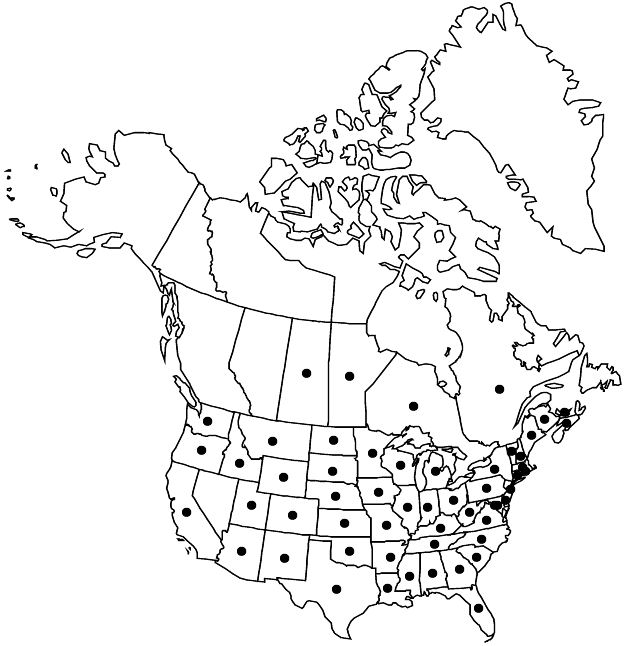Hibiscus trionum
Sp. Pl. 2: 697. 1753.
Herbs, annual, to 0.6 (–1) m, herbage throughout with mixture of coarse, simple or few-armed stellate hairs and fine, many-armed stellate hairs. Stems also with line of fine, curved hairs extending from node to node. Leaves: linear, 1–2.5 cm, margins ± ciliate. Flowers lasting a few hours, ascending or erect; calyx divided 1/2 length, campanulate, 0.8–1.8 cm, accrescent and conspicuously inflating to enclose fruit, becoming scarious, primary-veins zigzag, lobes broadly trullate, apices acute, nectaries absent; corolla rotate, petals yellow or cream with conspicuous purple-brown spot basally, purplish abaxially where exposed in bud, obovate to broadly obovate, 1.5–3 (–4) × 1–2 (–3) cm, apical margins repand, finely hairy abaxially where exposed in bud; staminal column dark red to purple, 0.4–0.7 (–1.1) cm, abruptly expanded below to form cup over ovary, bearing filaments in distal 1/2, free portion of filaments not secund, 2–3 (–5) mm; pollen yellow-orange; styles usually white to cream, yellowish, or maroon, 2–3 (–6) mm; stigmas dark red to purple. Capsules dark brown-black, ellipsoid to ovoid, 1.2–1.5 cm, apex obtuse to broadly acute, hairy. Seeds dark gray-brown, reniform-ovoid, somewhat depressed laterally, 2–2.5 mm, sparingly and minutely papillose. 2n = 28, 56 (both cultivars).
Phenology: Flowering Jul–Nov.
Habitat: Cultivated and waste places
Elevation: 10–1800 m
Distribution

Introduced; Man., N.B., N.S., Ont., P.E.I., Que., Sask., Ala., Ariz., Ark., Calif., Colo., Conn., Del., D.C., Fla., Ga., Idaho, Ill., Ind., Iowa, Kans., Ky., La., Maine, Md., Mass., Mich., Minn., Miss., Mo., Mont., Nebr., N.H., N.J., N.Mex., N.Y., N.C., N.Dak., Ohio, Okla., Oreg., Pa., R.I., S.C., S.Dak., Tenn., Tex., Utah, Vt., Va., Wash., W.Va., Wis., Wyo., Eurasia, Africa, Pacific Islands (New Zealand), Australia, also in West Indies (Jamaica)
Discussion
Hibiscus trionum is occasionally cultivated. It is native in Africa, Eurasia, and perhaps also in parts of New Zealand and Australia, where both diploids and tetraploids occur (B. G. Murray et al. 2008). Most wild plants in
North America have low, widely spreading branches; some cultivated forms are strictly erect and much taller than the weedy forms.
Three species have been segregated from Hibiscus trionum in Australia and New Zealand (L. A. Craven et al. 2011), and the name H. trionum has now been lectotypified (D. Iamonico and L. Peruzzi 2014). A further splitting of the species in other parts of its range might consequently affect the name of plants in the flora area.
Selected References
None.
Lower Taxa
"/2" is not declared as a valid unit of measurement for this property."fine" is not a number. "fine" is not a number.